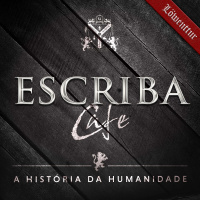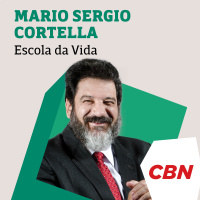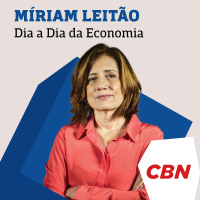Sinopsis
BioScience Talks , published by the American Institute of Biological Sciences, is the monthly discussion podcast of the journal BioScience.
Episodios
-
Science Leaders Issue Clarion Call for Evidence-Based Policy
08/12/2020 Duración: 13minSince the early days of the COVID-19 pandemic, US science leaders and others have expressed frustration with the lack of an informed and coherent federal response, a sentiment that echoes objections to the handling of other pressing issues, such as climate change. Writing in BioScience, an assemblage of the past presidents of the American Institute of Biological Sciences (AIBS) have issued an appeal for the reinvigoration of sound policy and governance through the careful consideration of sound science. In this episode BioScience Talks, we're joined by AIBS President Charles Fenster, Director of the Oak Lake Field Station, which is affiliated with South Dakota State University in Brookings, South Dakota. He discusses the article with us, and the conversation is followed by a presentation of the article by the past presidents, themselves. (Enter the contest described by emailing your guess to bioscience@aibs.org) Read this article in BioScience. Subscribe on iTunes. Subscribe on Stitcher. Catch up with us
-
Trump Administration Delists Gray Wolves: Response from the Experts
11/11/2020 Duración: 44minOn 29 October 2020, the US Fish and Wildlife Service announced the "successful recovery" of the US gray wolf population, with US Secretary of the Interior Secretary David Bernhardt stating that the species had "exceeded all conservation goals for recovery." These claims have been rebutted by numerous experts, who argue that the delisting decision is premature. Writing in BioScience, independent ecologist Carlos Carroll and colleagues argue that the declarations of recovery should be based on a more ambitious definition of recovery than one requiring the existence of a single secure population. Instead, they propose a framework for the "conservation of adaptive potential," which builds on existing agency practice to enhance the effectiveness of the Act. The authors argue that such an approach is particularly crucial in light of climate change and other ongoing threats to species. On this episode of BioScience Talks, Dr. Carroll is joined by coauthors Adrian Treves, Bridgett vonHoldt, and Dan Rohlf to discuss t
-
In Their Own Words: Paul Ehrlich
28/10/2020 Duración: 53minThis episode is the next in our oral history series, In Their Own Words. These pieces chronicle the stories of scientists who have made great contributions to their fields, particularly within the biological sciences. Each month, we will publish in the pages of BioScience, and on this podcast, the results of these conversations. Today, we are joined by Paul Ehrlich, president of the Center for Conservation Biology and Bing Professor of Population Studies Emeritus at Stanford University. He is also a past president of AIBS. Note: Both the text and audio versions have been edited for clarity and length. Read this article in BioScience. Subscribe on iTunes. Subscribe on Stitcher. Catch up with us on Twitter.
-
In Their Own Words: Marvalee Wake
16/10/2020 Duración: 48minThis episode is the next in our oral history series, In Their Own Words. These pieces chronicle the stories of scientists who have made great contributions to their fields, particularly within the biological sciences. Each month, we will publish in the pages of BioScience, and on this podcast, the results of these conversations. Today, we are joined by Marvalee Wake, professor of the Graduate School in the Department of Integrative Biology at the University of California, Berkeley. She is also a past president of AIBS. Note: Both the text and audio versions have been edited for clarity and length. Read this article in BioScience. Subscribe on iTunes. Subscribe on Stitcher. Catch up with us on Twitter.
-
Often Understudied, Fences Pose Ecological Threats
14/10/2020 Duración: 21minFences are one of humanity's most frequent landscape alterations, with their combined length exceeding even that of roads by an order of magnitude. Despite their ubiquity, they have received far less research scrutiny than many human-built structures. Alex McInturff, a postdoctoral researcher at UC Santa Barbara, joins us on this episode of BioScience Talks to discuss fence ecology. Read the article in BioScience. Subscribe on iTunes. Subscribe on Stitcher. Catch up with us on Twitter.
-
In Their Own Words: Neil deGrasse Tyson
18/09/2020 Duración: 54minThis episode is the next in our oral history series, In Their Own Words. These pieces chronicle the stories of scientists who have made great contributions to their fields. Each month, we will publish in the pages of BioScience, and on this podcast, the results of these conversations. Today, we are joined by Dr. Neil deGrasse Tyson, Frederick P. Rose Director of the Hayden Planetarium at the American Museum of Natural History, in New York City, and host of COSMOS: Possible Worlds. Note: Both the text and audio versions have been edited for clarity and length. Read this article in BioScience. Subscribe on iTunes. Subscribe on Stitcher. Catch up with us on Twitter.
-
Measuring Metabolism: How Much Food Does a Bear Need?
09/09/2020 Duración: 32minThe keys to conserving large mammals, such as bears, often lie in better understanding their ecophysiology. Armed with knowledge about the animals' energy needs, conservationists can encourage actions that better preserve populations and ensure that their habitats will be able to sustain them both now and as the climate continues to rapidly change. In this episode of BioScience Talks, we're joined by Dr. John Whiteman of Old Dominion University, who describes efforts to characterize metabolisms among large mammals from India to the Arctic—and the ways that this work fuels the broader scientific endeavor. Read Dr. Whiteman's 2019 BioScience article. Read more about polar bear diets (and body temperatures). Wildlife SOS Free the Bears Subscribe on iTunes. Subscribe on Stitcher. Catch up with us on Twitter. Photograph: Mike Lockhart.
-
In Their Own Words: Gene E. Likens
17/08/2020 Duración: 54minThis episode is the next in our oral history series, In Their Own Words. These pieces chronicle the stories of scientists who have made great contributions to their fields, particularly within the biological sciences. Each month, we will publish in the pages of BioScience, and on this podcast, the results of these conversations. Today, we are joined by Dr. Gene E. Likens, emeritus president of the Cary Institute of Ecosystem Studies and a distinguished professor at the University of Connecticut. He previously served as president of the American Institute of Biological Sciences. Note: Both the text and audio versions have been edited for clarity and length. Read this article in BioScience. Subscribe on iTunes. Subscribe on Stitcher. Catch up with us on Twitter.
-
21st Century Natural History Collections
12/08/2020 Duración: 28minNatural history collections are a crucial resource to many scientific endeavors, and their value has been bolstered by recently undertaken digitization efforts. However, many opportunities remain to improve collections' usability, ensure that their contributions are properly credited, and protect them from a perilous budget environment that, in many cases, threatens their long-term survival. Writing in BioScience, Sara E. Miller, Lisa N. Barrow, Sean M. Ehlman, Jessica A. Goodheart, Stephen E. Greiman, Holly L. Lutz, Tracy M. Misiewicz, Stephanie M. Smith, Milton Tan, Christopher J. Thawley, Joseph A. Cook, and Jessica E. Light provide an overview of the challenges and pose solutions. Dr. Miller joins us in this episode to discuss the article and the future of the field. Read this article in BioScience. Listen to our episode on collections in the COVID-19 era. Subscribe on iTunes. Subscribe on Stitcher. Catch up with us on Twitter.
-
Hot Days and Tree Transpiration
28/07/2020 Duración: 26minShade from urban trees has long been understood to offer respite from the urban heat island effect, a phenomenon that can result in city centers that are 1–3 degrees Centigrade warmer than surrounding areas. Less frequently discussed, however, are the effects of tree transpiration in combination with the heterogeneous landscapes that constitute the built environment. Writing in BioScience, Joy Winbourne and her colleagues present an overview of the current understanding of tree transpiration and its implications, as well as areas for future research. Their work, derived from tree sap flow data, reveals the complexity and feedbacks inherent in trees' and urban zones' responses to extreme heating events. Dr. Winbourne joins us on this episode of BioScience Talks to discuss the newly published article, as well as directions for future research and the prospects for using trees to better mitigate urban heat in the face of a changing climate. Read this article in BioScience. Subscribe on iTunes. Subscribe on Sti
-
In Their Own Words: Douglas Futuyma
08/07/2020 Duración: 39minThis episode is the next in our oral history series, In Their Own Words. These pieces chronicle the stories of scientists who have made great contributions to their fields, particularly within the biological sciences. Each month, we will publish in the pages of BioScience, and on this podcast, the results of these conversations. Today, we are joined by Dr. Douglas Futuyma, professor emeritus of ecology and evolution at Stony Brook University, in Stony Brook, New York. He previously served as president of the American Institute of Biological Sciences. Note: Both the text and audio versions have been edited for clarity and length. Read this article in BioScience. Subscribe on iTunes. Subscribe on Stitcher. Catch up with us on Twitter.
-
Leveraging Biodiversity Science Infrastructure in the COVID-19 Era
23/06/2020 Duración: 53minThe pandemic resulting from SARS-CoV-2 has had profound impacts on the conduct of scientific research and education: A large proportion of field research has ground to a halt, and research and science education were forced to move online. In light of these developments, the nation's biodiversity infrastructure—natural history collections housed in museums, herbaria, universities, and colleges, among other locations, and often available digitally—are ready to play an even larger role in enabling important scientific discoveries. Further, collections may also be instrumental in preventing or mitigating future infectious outbreaks. Two recent BioScience publications, linked below, highlight these issues. In this episode BioScience Talks, we're joined by representatives from the collections and science education communities. Guests included John Bates, Natural Science Collections Alliance, the Field Museum of Natural History; Pam Soltis, Florida Museum of Natural History, the University of Florida; Gil Nelson, iD
-
Using Metacommunities for Better Biological Assessments
09/06/2020 Duración: 24minEvaluating shifts in the health of dynamic ecosystems is often difficult—for instance, rivers with intermittent flows and populations with varied dispersal characteristics might look very different from one month to the next. In this episode of BioScience Talks, we're joined by Núria Cid and Thibault Datry of INRAE, in Lyon, France, who discuss their new framework for a metacommunity approach that aims to help researchers overcome these challenges. Read this article in BioScience. Subscribe on iTunes. Subscribe on Stitcher. Catch up with us on Twitter.
-
In Their Own Words: Judith Weis
29/05/2020 Duración: 48minThis episode is the next in our oral history series, In Their Own Words. These pieces chronicle the stories of scientists who have made great contributions to their fields, particularly within the biological sciences. Each month, we will publish in the pages of BioScience, and on this podcast, the results of these conversations. Today, we are joined by Dr. Judith Weis of Rutgers University. She previously served as president of the American Institute of Biological Sciences. Note: Both the text and audio versions have been edited for clarity and length. Read this article in BioScience. Subscribe on iTunes. Subscribe on Stitcher. Catch up with us on Twitter.
-
In Their Own Words: Gregory Anderson
18/05/2020 Duración: 53minThis episode is the next in our oral history series, In Their Own Words. These pieces chronicle the stories of scientists who have made great contributions to their fields, particularly within the biological sciences. Each month, we will publish in the pages of BioScience, and on this podcast, the results of these conversations. Today we are joined by Dr. Gregory Anderson, who is with the Department of Ecology and Evolutionary Biology at the University of Connecticut, Storrs. He previously served as president of the American Institute of Biological Sciences Note: Both the text and audio versions have been edited for clarity and length. Read this article in BioScience. Subscribe on iTunes. Subscribe on Stitcher. Catch up with us on Twitter.
-
-
Addressing COVID-19 Supply Shortages with 3D Printing
08/05/2020 Duración: 14minThroughout the COVID-19 crisis, efforts to provide adequate testing and healthcare have at times been stymied by shortages of medical supplies. To help address one such shortage, a team at the University of Louisville designed a novel 3D-printed swab made of a pliable resin material. In this episode of BioScience Talks, we're joined by Dr. Gerald Grant, who describes the process by which such tools are developed and manufactured, as well as their potential to quickly fill this and other gaps in the medical supply chain. Read more. Subscribe on iTunes. Subscribe on Stitcher. Catch up with us on Twitter.
-
Race and STEM Diversity
27/04/2020 Duración: 28minDespite ongoing efforts to increase diversity among STEM faculty, participation rates of faculty members of color remain lower in STEM fields than in other academic disciplines. In this episode of BioScience Talks, we are joined by Dr. Maria Miriti, whose recent article in BioScience, The Elephant in the Room: Race and STEM Diversity, discusses these shortcomings, their causes, and some of the ways in which they may be best addressed in the future. Read the article. Subscribe on iTunes. Subscribe on Stitcher. Catch up with us on Twitter.
-
Impact Series: Coronavirus (COVID-19) Testing, Next Steps, and the Role of Small Business
13/04/2020 Duración: 35minPublic health officials have argued that thorough and accurate testing for SARS-CoV-2 is essential for gaining a foothold in the fight against the deadly COVID-19 pandemic. To date, however, a lack of reliable testing in the United States has hampered efforts to achieve a thorough understanding of the disease's abundance and spread. In this episode of BioScience Talks, we are joined by Dr. Crystal Icenhour, CEO of Aperiomics, and Dr. Robbie Barbero, Chief Business Officer of Ceres Nanosciences. Both companies have recently ramped up efforts to improve the prospects of broad-scale testing for the novel pathogen in human patients. Aperiomics, whose core technology uses deep shotgun metagenomic sequencing to test for tens of thousands of bacteria, virus, fungus, and parasite at once, has launched a SARS-CoV-2-specific test, with the aims of increasing test availability and delivering crucially important public health data. Ceres Nanosciences's flagship Nanotrap particle technology enables the capture, concentrat
-
In Their Own Words: Joel Cracraft
08/04/2020 Duración: 43minThis episode is the fourth in our oral history series, In Their Own Words. These pieces chronicle the stories of scientists who have made great contributions to their fields, particularly within the biological sciences. Each month, we will publish in the pages of BioScience, and on this podcast, the results of these conversations. Today we are joined by Dr. Joel Cracraft, curator in the Department of Ornithology at the American Museum of Natural History. He previously served as president of the American Institute of Biological Sciences Note: Both the text and audio versions have been edited for clarity and length. Read this article in BioScience. Subscribe on iTunes. Subscribe on Stitcher. Catch up with us on Twitter.














